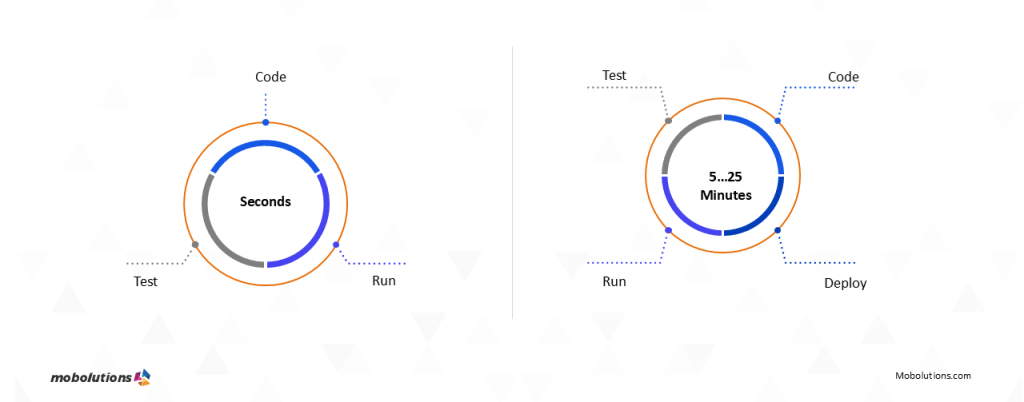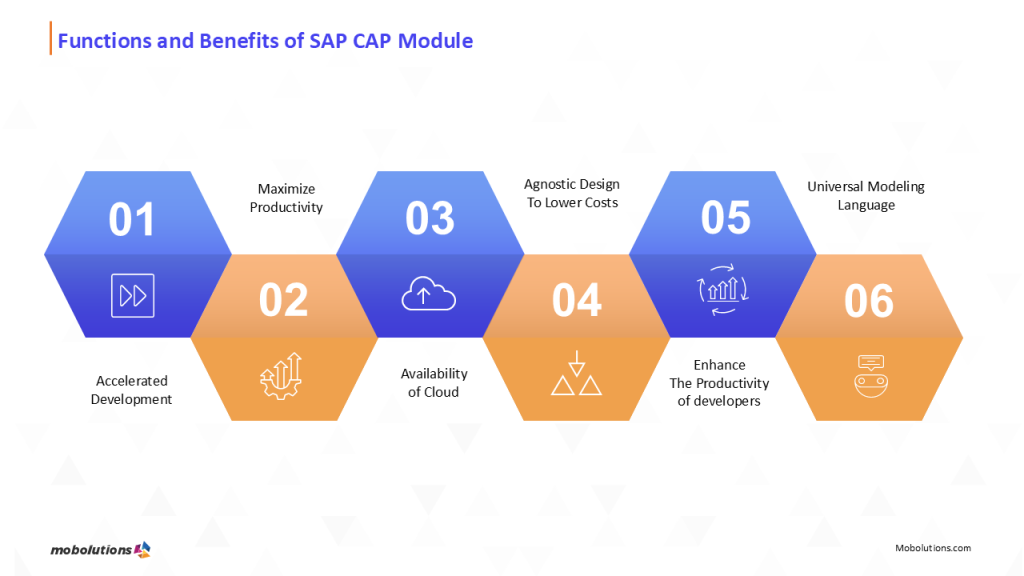What is SAP Cloud Application Programming Model
The SAP Cloud Application Programming Model (CAP) represents a durable framework that assists developers in building cloud-native SAP Business Technology Platform (BTP) applications. Developers can access an extensive collection of tools and libraries within CAP, which helps them create scalable applications that remain secure and easy to maintain.
SAP CAP represents a development framework which simplifies enterprise application development by abstracting complex backend operations to enable developers to concentrate on business functions. The framework uses Core Data Services (CDS) at its foundation to declare data models and service interfaces which support domain-driven design principles. Developers can choose between Java and Node.js as their preferred programming languages since the model supports both these languages.
Key Features of SAP CAP model:
The SAP Cloud Application Programming Model (CAP) represents a durable framework that assists developers in building cloud-native SAP Business Technology Platform (BTP) applications. Developers can access an extensive collection of tools and libraries within CAP, which helps them create scalable applications that remain secure and easy to maintain.
SAP CAP represents a development framework which simplifies enterprise application development by abstracting complex backend operations to enable developers to concentrate on business functions. The framework uses Core Data Services (CDS) at its foundation to declare data models and service interfaces which support domain-driven design principles. Developers can choose between Java and Node.js as their preferred programming languages since the model supports both these languages.
Key Features of SAP CAP model:
1. Core Data Services (CDS)
CAP relies on CDS as its foundation for enabling developers to create data models and service interfaces through high-level declarative definitions. The abstraction streamlines development tasks while maintaining uniformity throughout the application. Developers can employ SAP Fiori elements to create user interfaces by adding annotations to their CDS models.
2. Service SDKs
Service SDKs from CAP contain implementations for Java and Node.js, which assist developers in developing business rules and opening service endpoints through REST or OData API methods. The SDKs work perfectly with SAP BTP services to provide authentication features along with authorization and other platform-specific operations.
3. Development Tools
SAP Business Application Studio is the primary development environment for CAP, offering a cloud-based, integrated development experience. It provides tools for modeling, coding, testing, and deploying CAP applications. Additionally, local development is supported through Visual Studio Code, catering to developers’ preferences.
4. Databases
CAP applications benefit from their primary database SAP HANA Cloud integration yet developers can utilize other databases like PostgreSQL and SQLite. Developers possess the freedom to select the database which best suits their application needs.
5. Frontend Integration
CAP supports various frontend technologies, with SAP Fiori being the default for building user interfaces. Through annotations in CDS models, developers can automatically generate UI components such as List Reports and Object Pages. Alternatively, CAP can integrate with other frontend frameworks like React or Angular
6. Fast Inner Loops
CAP applications are agnostic by design, developers can stay in fast inner loops without connecting to the cloud—a process known as airplane mode development—by using local mock variants as stand-ins for many platform services and features. This eliminates the need to constantly connect to or deploy to the cloud. They can only test in hybrid mode or perform ad hoc cloud deployments when required.
Functions and Benefits of SAP CAP Module:
Simplified Development:
CAP automates repetitive tasks, allowing developers to focus on business logic and application-specific features.
Consistency and Best Practices:
SAP guidelines and best practices serve as the foundation for creating standard applications through CAP which improves their maintainability and scalability.
Rapid Prototyping:
Developers benefit from SAP Build Code and the generative AI copilot Joule to produce application code rapidly which decreases development time while speeding up market entry.
Seamless Integration:
The integration capabilities of CAP systems extend to SAP S/4HANA and SAP Fiori solutions to connect multiple enterprise systems effectively.
Real-World Example: Incident Management Application:
Consider an Incident Management application built using SAP CAP. The backend is developed using CDS to define entities like Incident, Priority, and Status, along with their relationships. Service definitions expose these entities through OData APIs. The frontend leverages SAP Fiori elements to automatically generate UI components based on the annotations in the CDS models. This approach ensures consistent user experience and reduces manual UI development efforts.
To embark on your journey with SAP CAP, follow these steps:
- Set Up Development Environment: Install SAP Business Application Studio or Visual Studio Code with the necessary extensions for CAP development.
- Create a CAP Project: Use the provided templates to scaffold a new CAP project, defining your data models and services.
- Implement Business Logic: Develop the necessary business logic using the Service SDKs, ensuring to handle operations like Create, Read, Update, and Delete (CRUD).
- Define User Interfaces: Utilize annotations in your CDS models to define UI components or integrate with other frontend frameworks as needed.
- Deploy and Test: Deploy your application to SAP BTP and test its functionality to ensure it meets the desired requirements.
Conclusion:
The development framework of SAP Cloud Application Programming Model (CAP) presents a complete and simplified method for producing cloud-native apps on SAP BTP. The platform features of CAP enable developers to build durable and scalable applications which meet organizational requirements and follow standard industry approaches. CAP enables developers to achieve success in contemporary cloud development through its available tools and frameworks for both new application creation and existing application extension activities. Let’s have a quick conversation through info@mobolutions.com!







